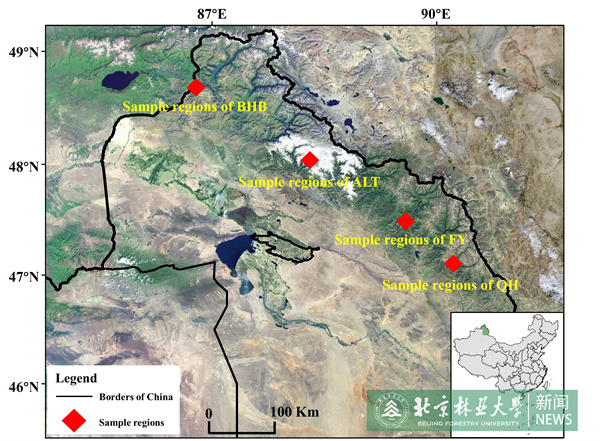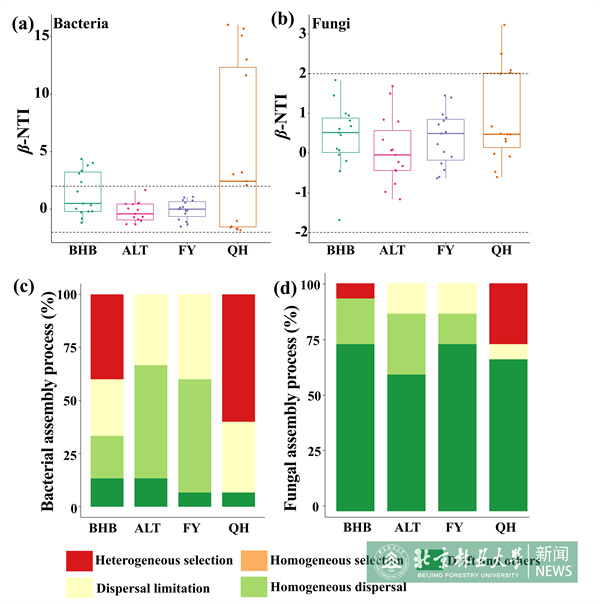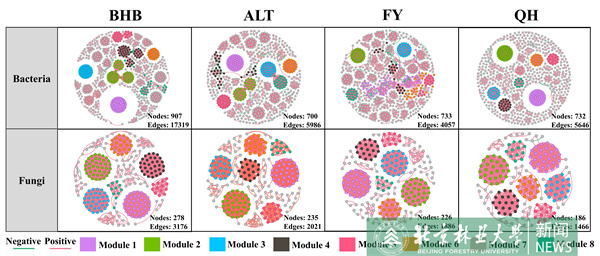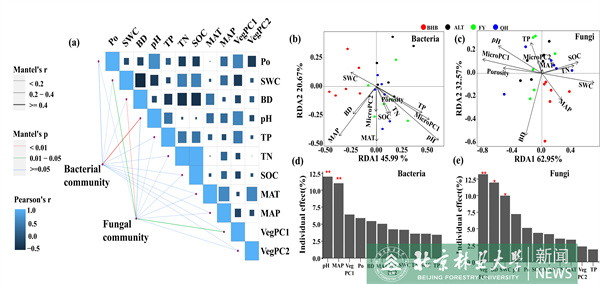Latest news
The research team led by Professor Xu Jiliang from the Restoration Ecology Program at the School of Ecology and Nature Conservation recently published a study based on vegetation and soil survey data from Taiga ecosystems in Xinjiang. The research explores the differing biogeographic patterns and formation mechanisms of soil bacterial and fungal communities.Their findings were published online in the high-impact journal Journal of Environmental Management (IF=8.0) under the title "Differential spatial responses and assembly mechanisms of soil microbial communities across region-scale Taiga ecosystems".
Taiga Forests, which are the most representative forest type in the Northern Hemisphere, characterized by significant carbon sequestration capacity. However, they have been adversely impacted by rising temperatures and drought conditions associated with climate change, as well as the increasing frequency of wildfires. These factors have culminated in significant forest area loss and degradation, which will profoundly affect forest structure and function. In China, taiga is mainly distributed in northern Xinjiang Province and Northeast China, compared to Northeast China taiga, the Xinjiang taiga has been impacted by drought attributable to climate change, and is in a worrying state of growth. Soil microorganisms are essential components of forest biodiversity, actively engaging in biogeochemical processes such as carbon fixation, soil nutrient cycling, and plant production. Furthermore, they exhibit high sensitivity to environmental changes, and typically serve as fundamental indicators for assessing the quality and health of forest ecosystems. Considering the significant ecological functions and coercive situation of taiga forests, there is an urgent need to understand soil microbial community dynamics, which contributes to knowledge of how taiga responds to environmental change.


Different soil microbial communities play distinct key roles in regulating forest ecosystem processes and functions. However, the differences in spatial variability and assembly mechanisms of various taiga forest soil microbial taxa remain poorly understood. Here, the spatial patterns of bacterial and fungal communities were assessed, their assembly processes, and the influencing factors in taiga forest ecosystems in Xinjiang, China. A significant distance decay pattern was observed in the similarity of bacterial and fungal communities, with bacterial communities exhibiting a more pronounced pattern than fungal communities. Stochastic and deterministic processes governed together to drive soil bacterial community assembly, whereas stochastic processes dominated fungal community assembly. The coexistence networks revealed that the interactions of bacterial and fungal networks in the four regions are primarily based on interspecies symbiosis, with fungal coexistence networks demonstrating greater stability than bacterial networks. Additionally, the study identified a positive relationship between the modularity of bacterial networks and dispersal limitation. Analysis of environmental factors revealed that soil pH primarily affects the characteristics and assembly mechanisms of bacterial communities, while vegetation conditions primarily affect fungal diversity and composition, with other unconsidered environmental variables influencing the fungal community assembly process. This study emphasized the distinct ways in which bacteria and fungi respond to environmental factors and interspecies interactions. The results suggested that distinct restoration measures should be implemented for bacteria and fungi in future conservation efforts for forest soil microorganisms.


Professor Xu Jiliang from the School of Ecology and Nature Conservation is the corresponding author, with PhD student Liu Zhengxiao as the first author. This research was supported by the Third Xinjiang Scientific Expedition Program (Grant No. 2021xjkk0603).
Paper link:https://doi.org/10.1016/j.jenvman.2024.122653
Written by Liu Zhengxiao
translated and edited by Song He
Reviewed by Yu Yangyang












